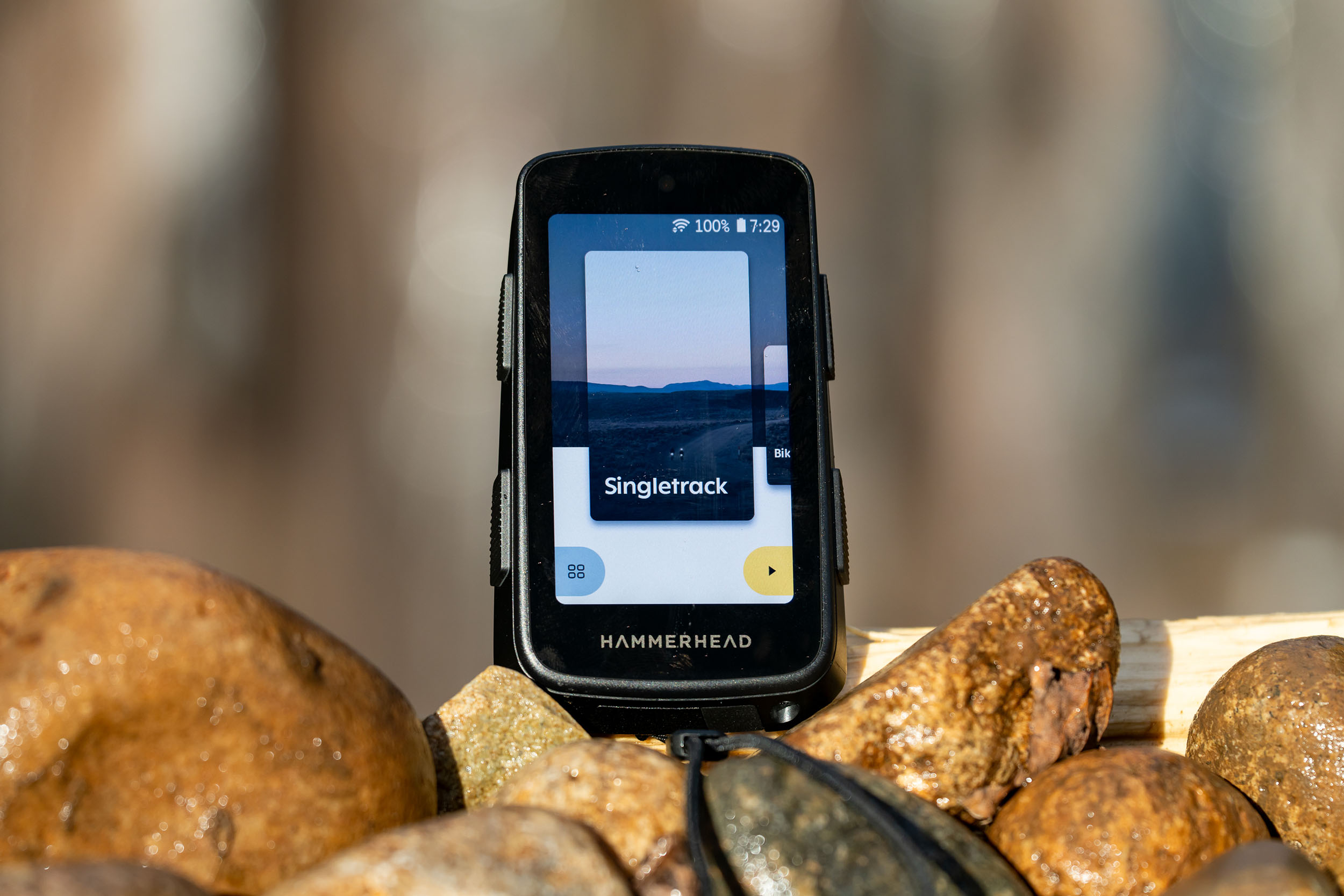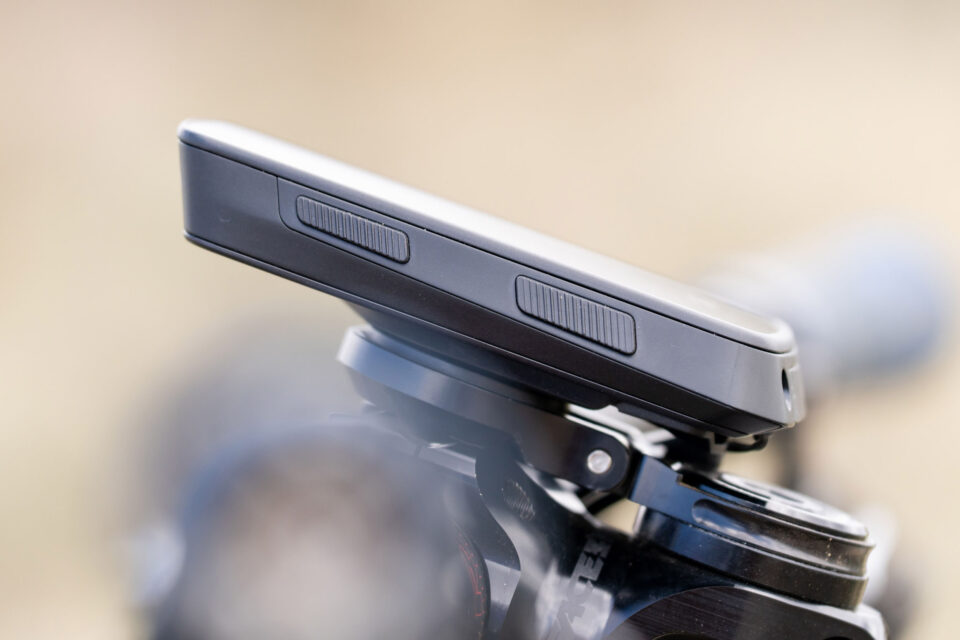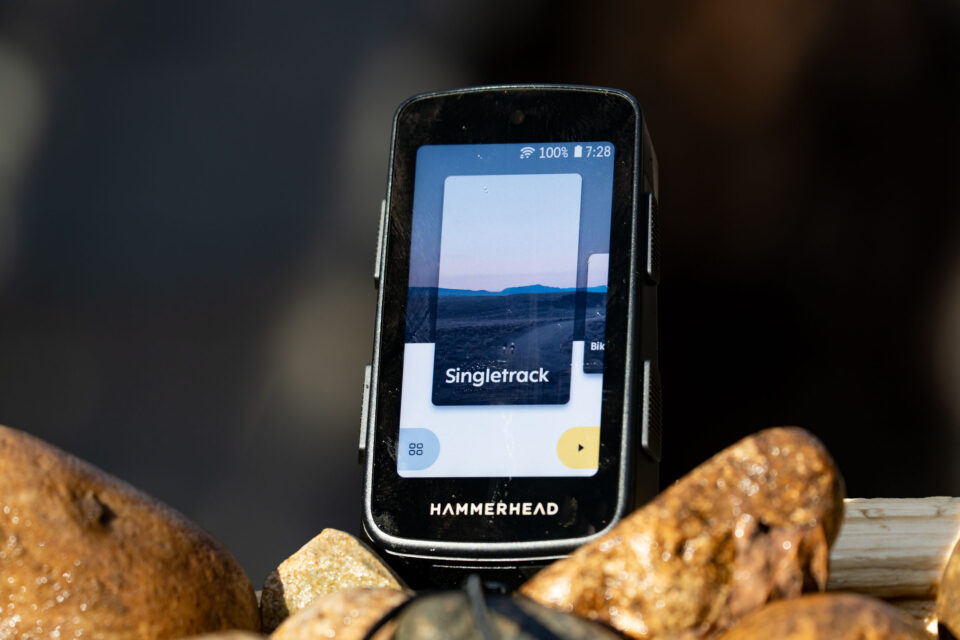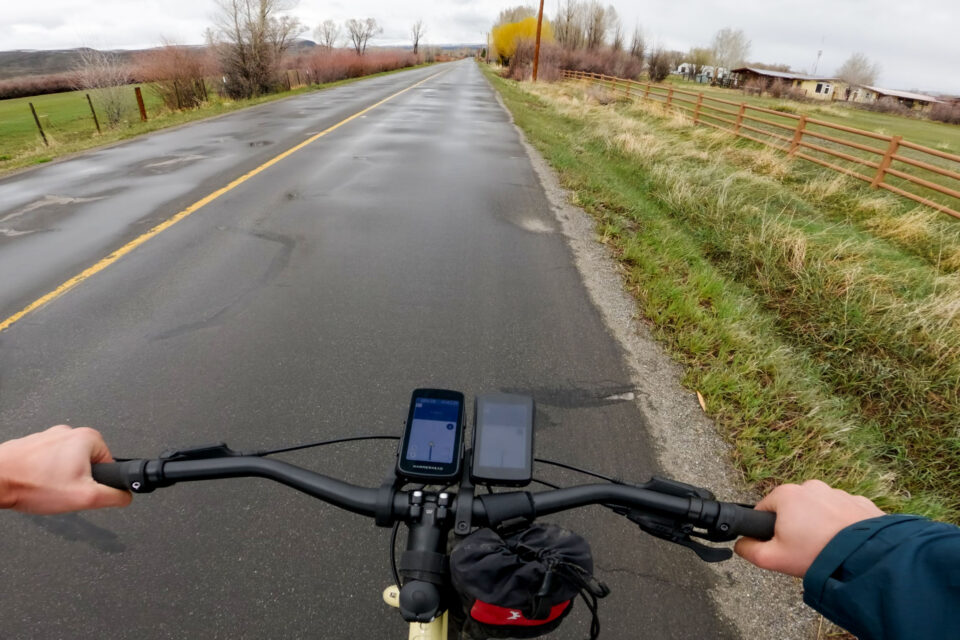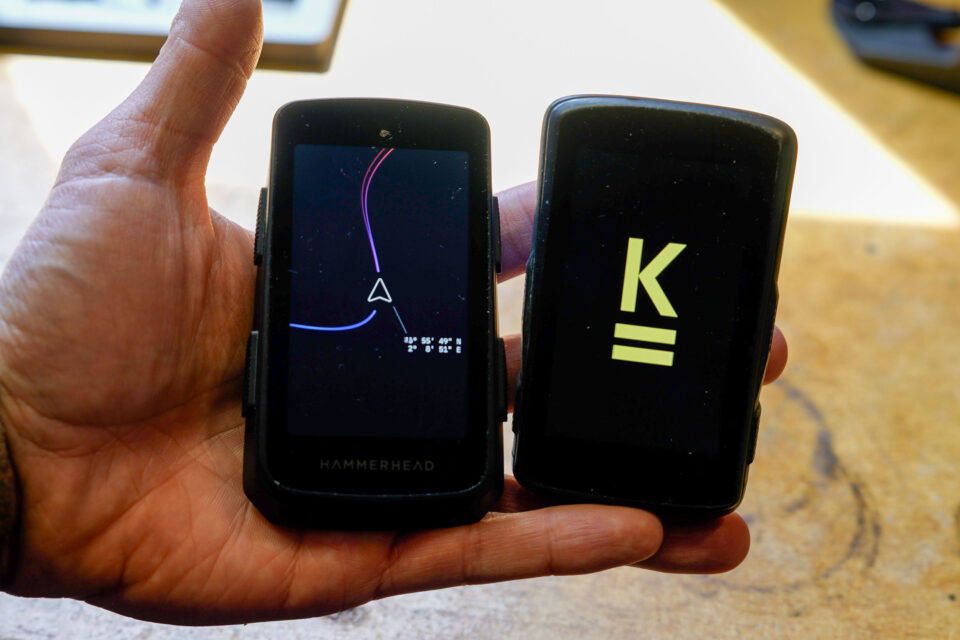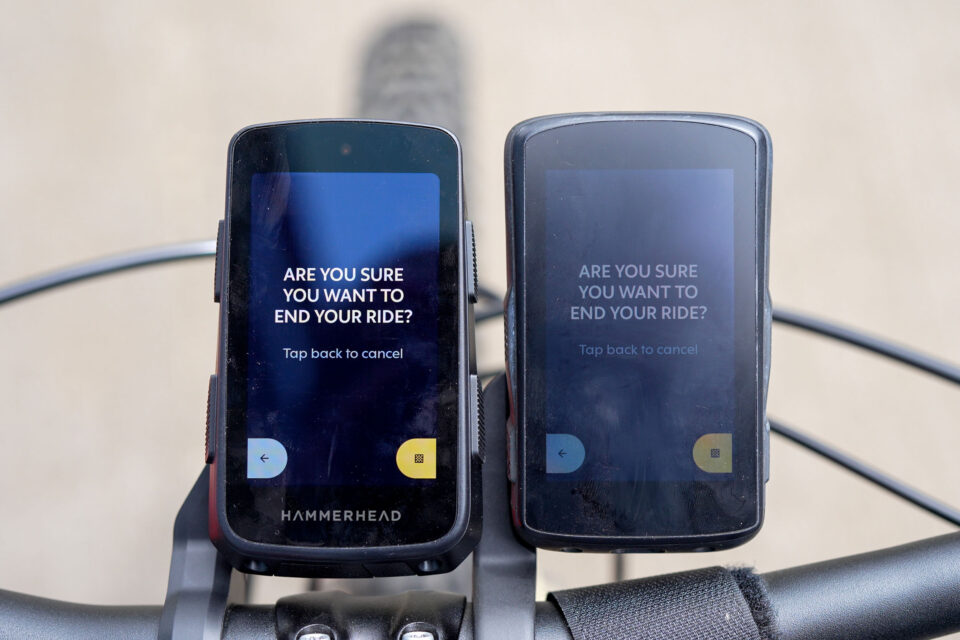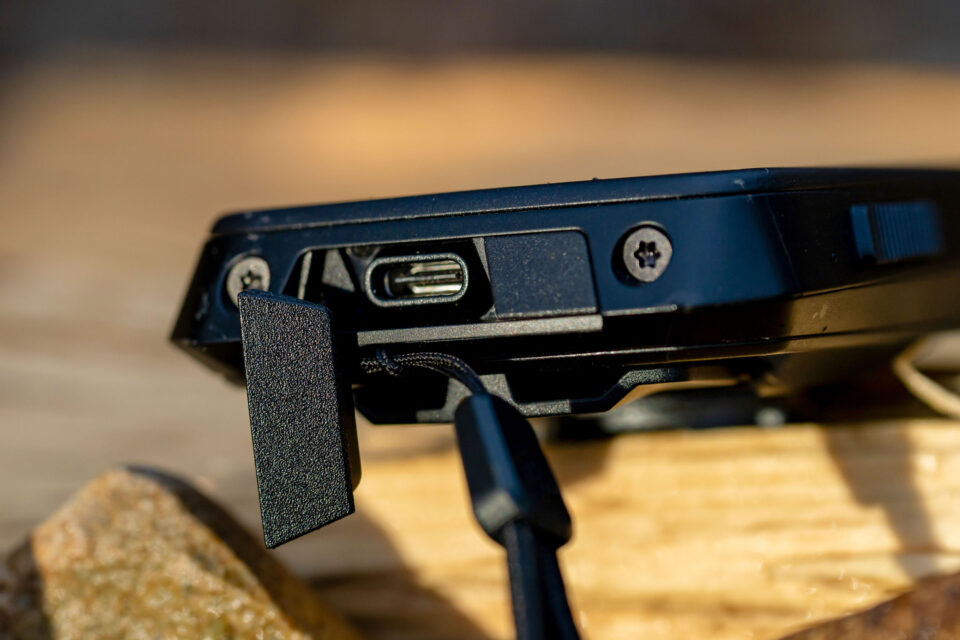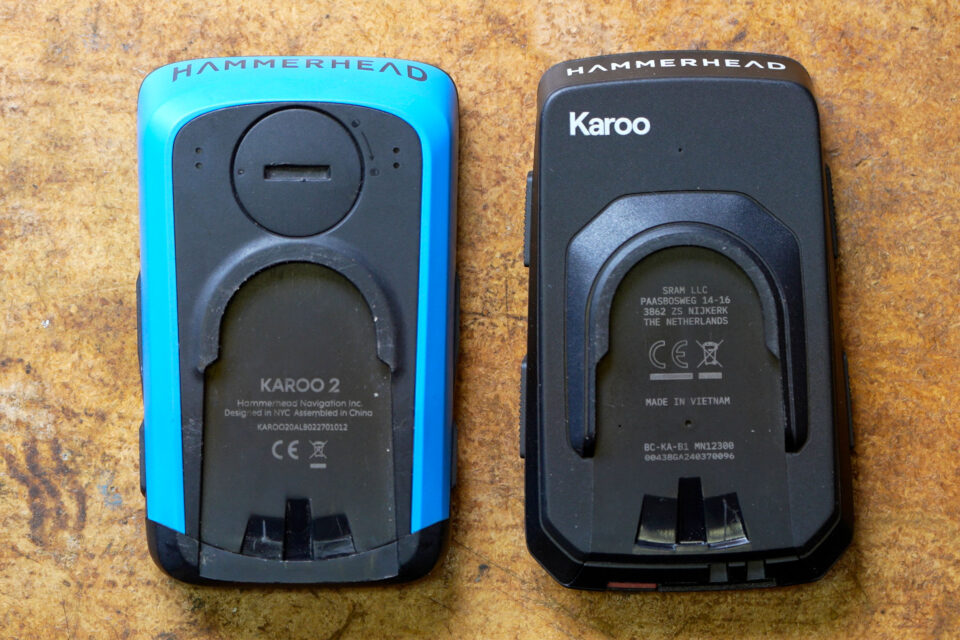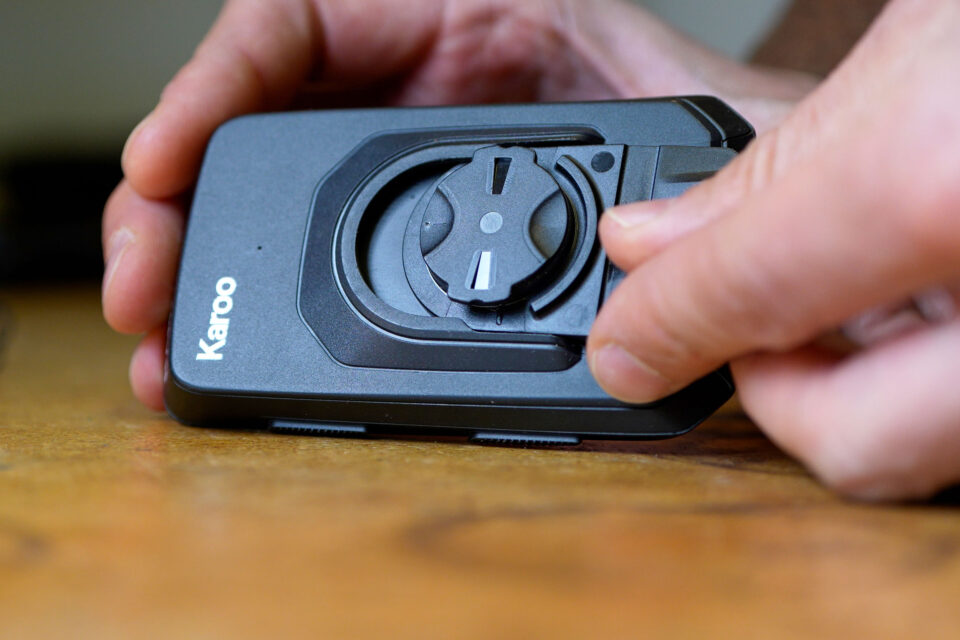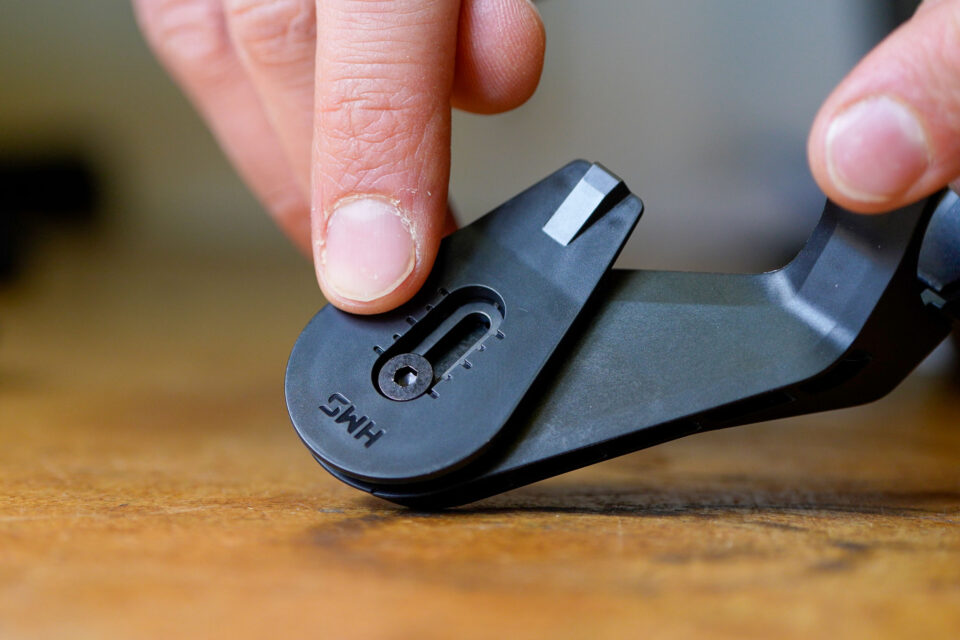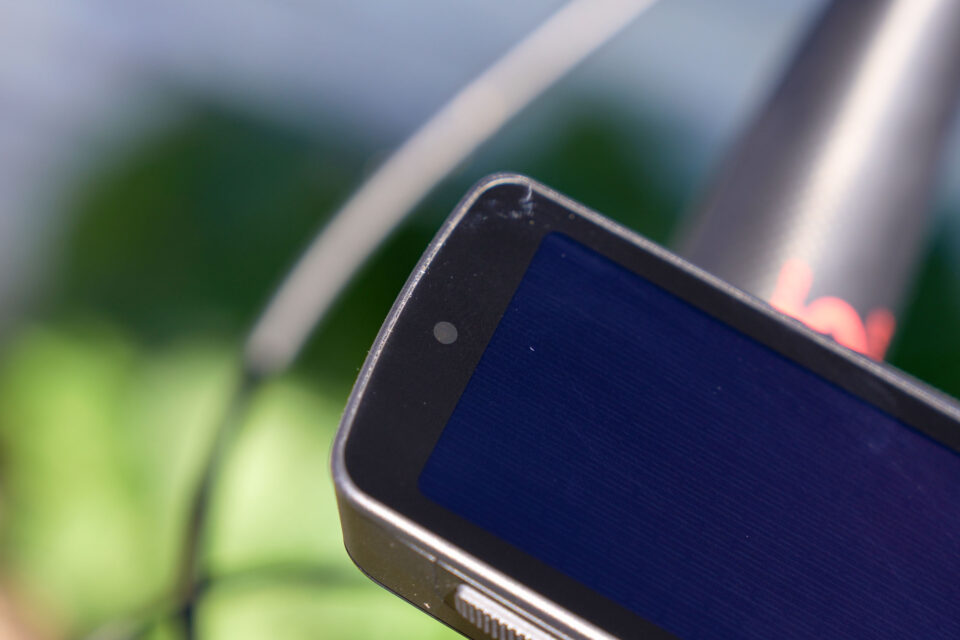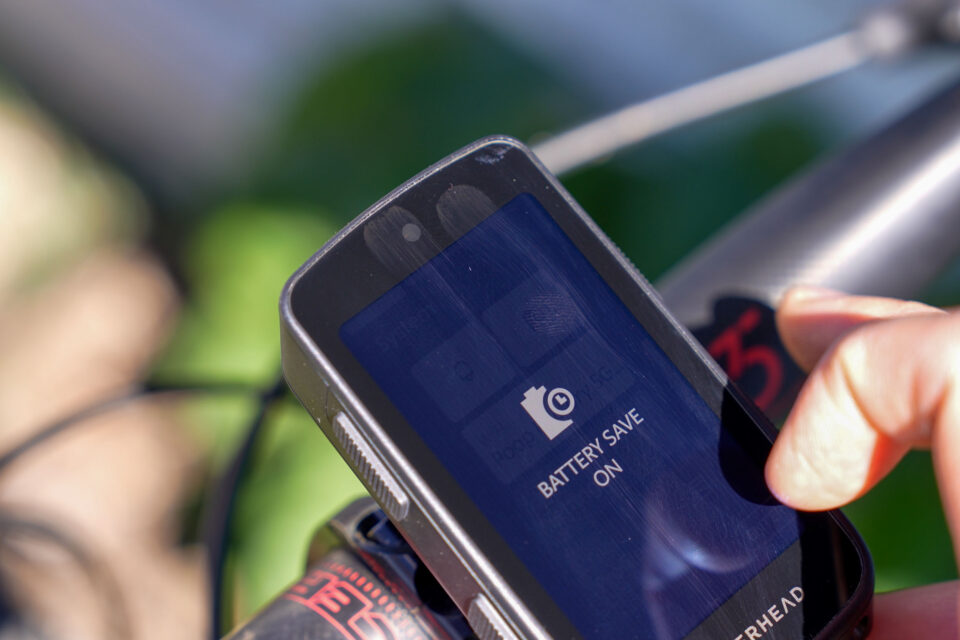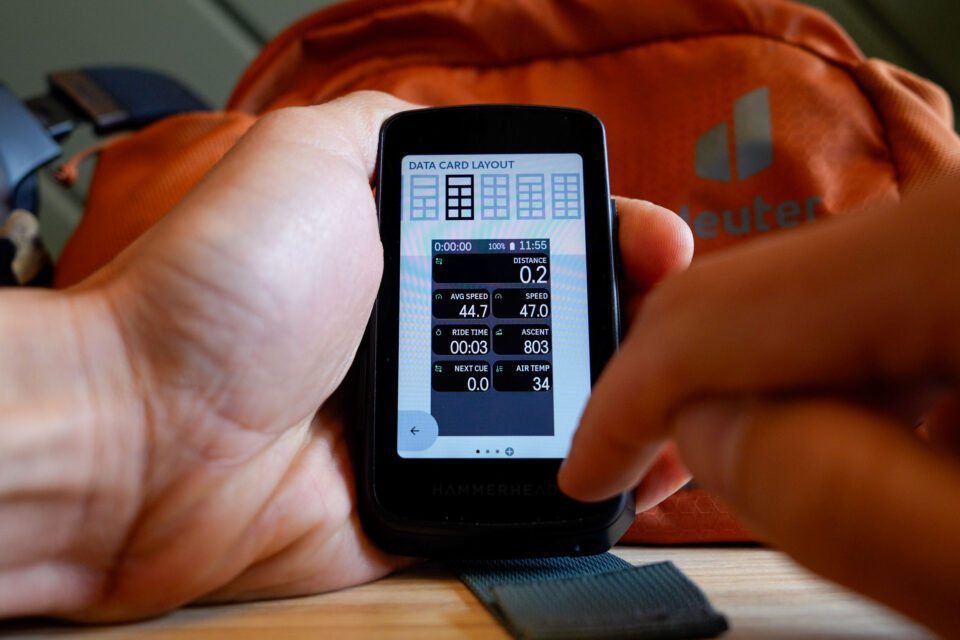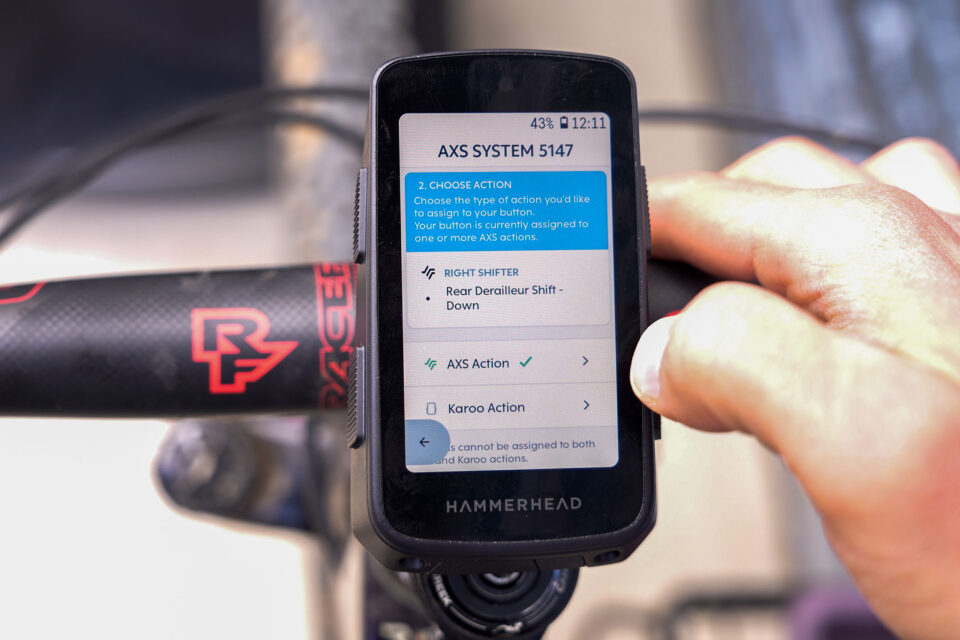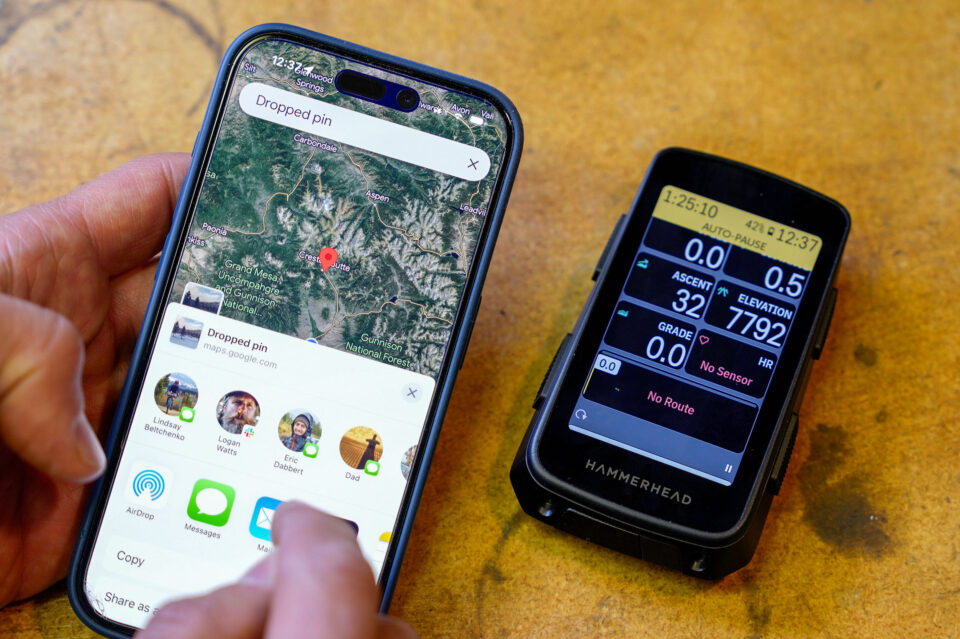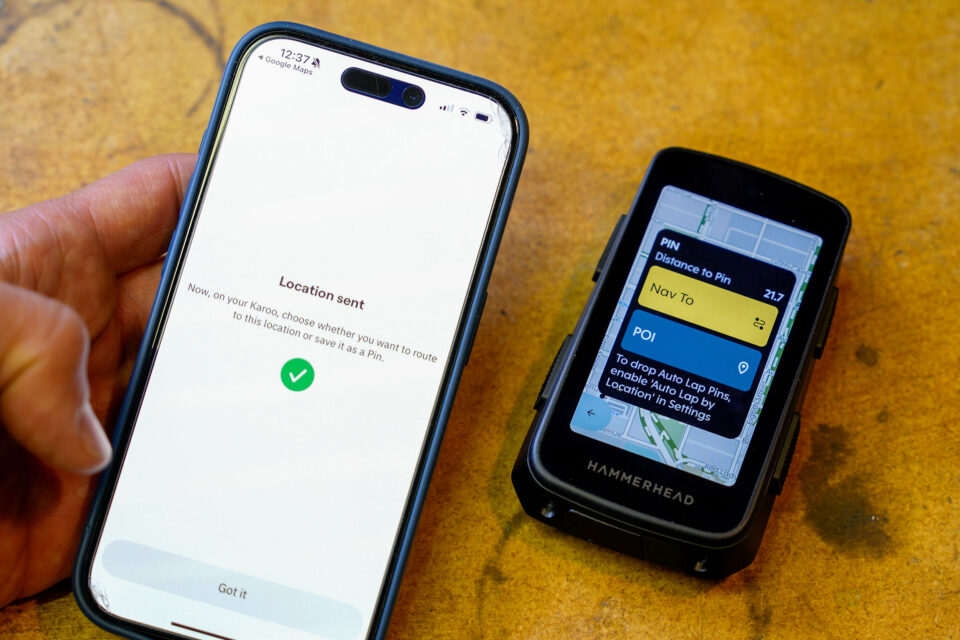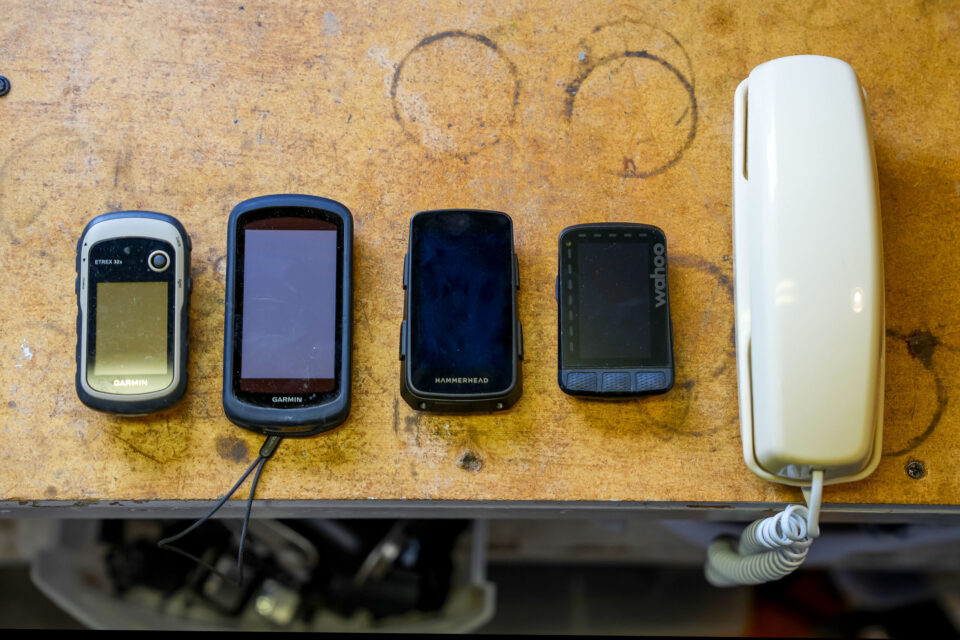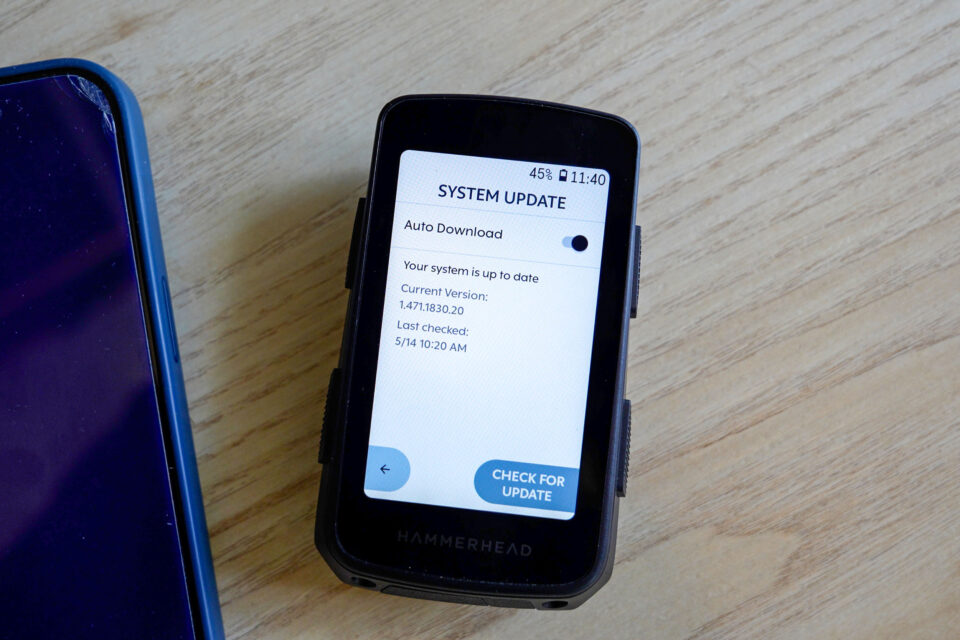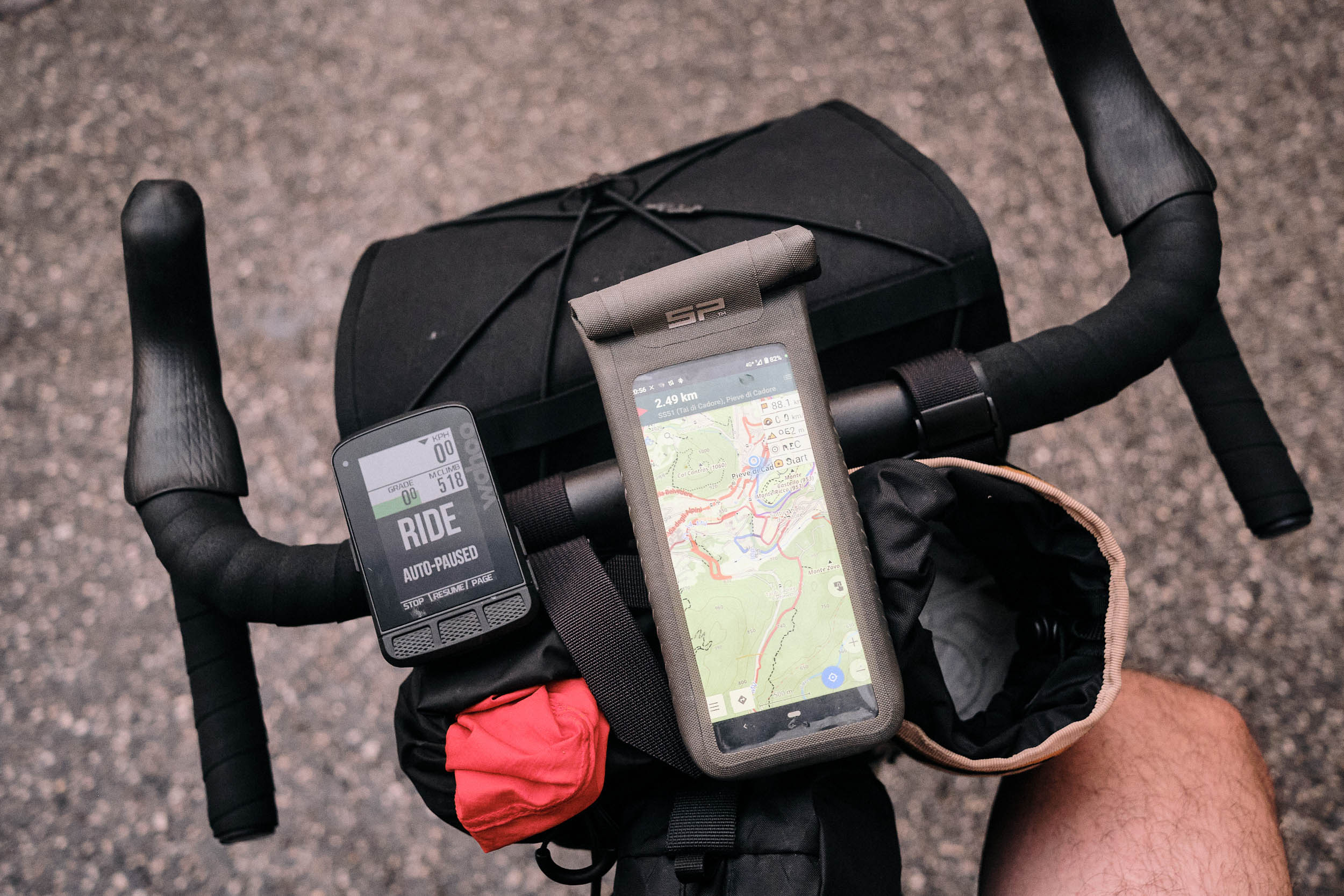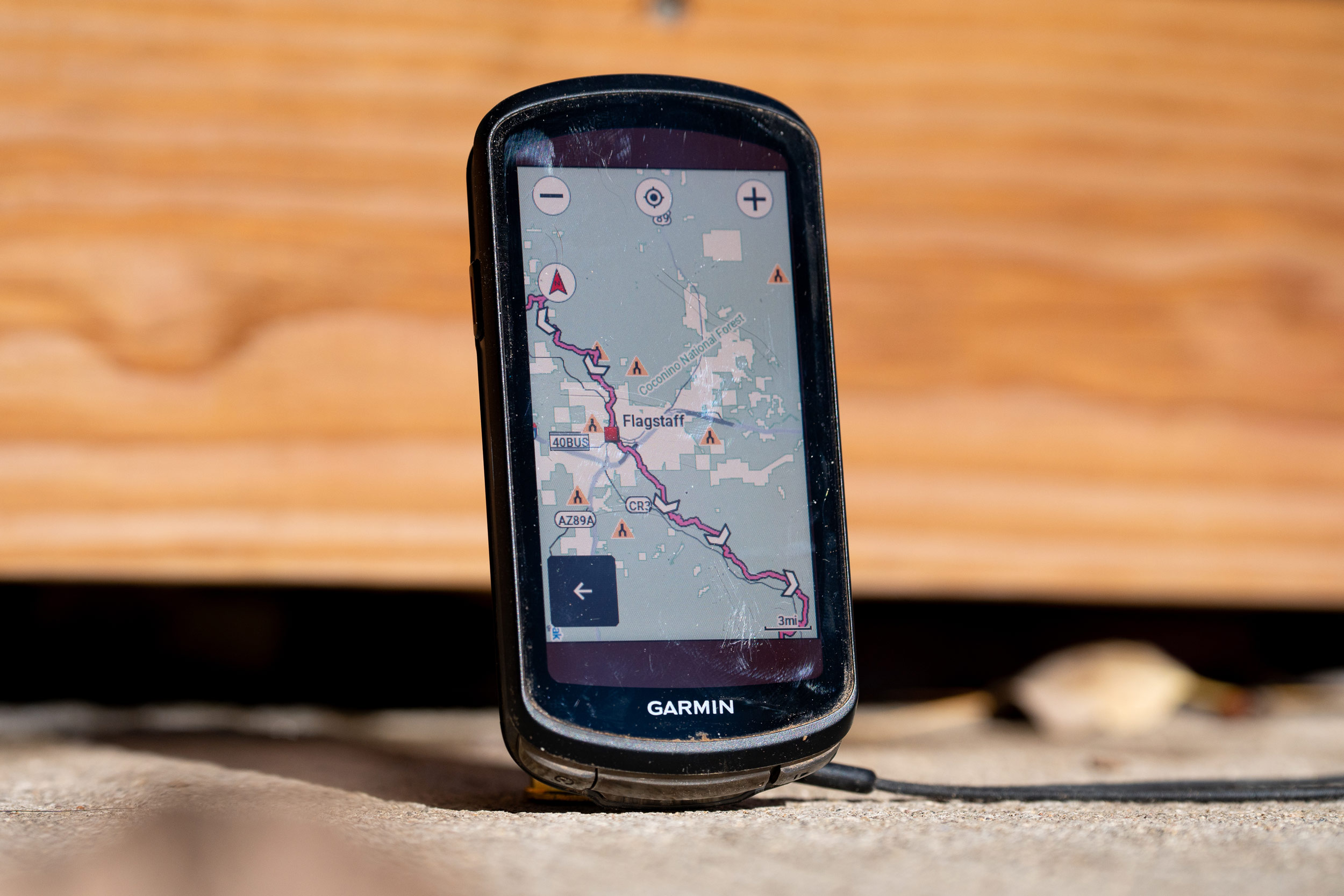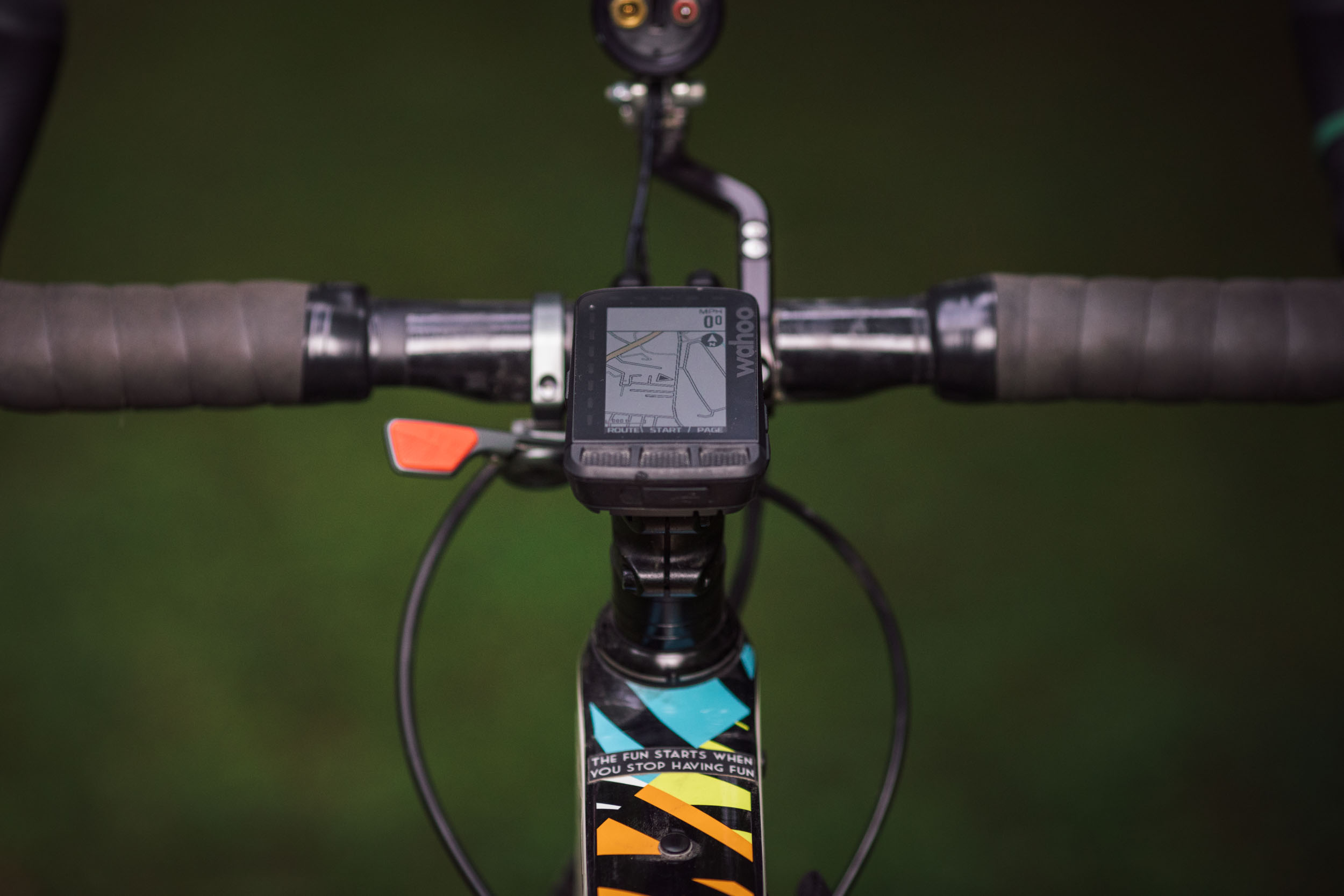Hammerhead Karoo Review: The Most Elegant GPS Unit Yet?
Just announced, the new Hammerhead Karoo is the brand’s third-generation head unit and the first since being acquired by SRAM. As you might expect, there are several new features to better integrate with SRAM components, along with a few other noteworthy upgrades and a fresh companion app. In our first-look review, Neil unpacks all the details and compares it to several other devices. See it here…
PUBLISHED May 15, 2024
The latest Hammerhead Karoo is the third generation of Karoo head units by Hammerhead, a brand founded in 2013 during a 3,000-mile ride across the United States. I’ve been using it for a week now, so these insights primarily reflect my initial impressions. I’ll provide a long-term update later this summer, specifically as it relates to battery life in various riding scenarios and conditions. Read on for the complete first-ride review, and find the video and pros and cons at the bottom of the page.
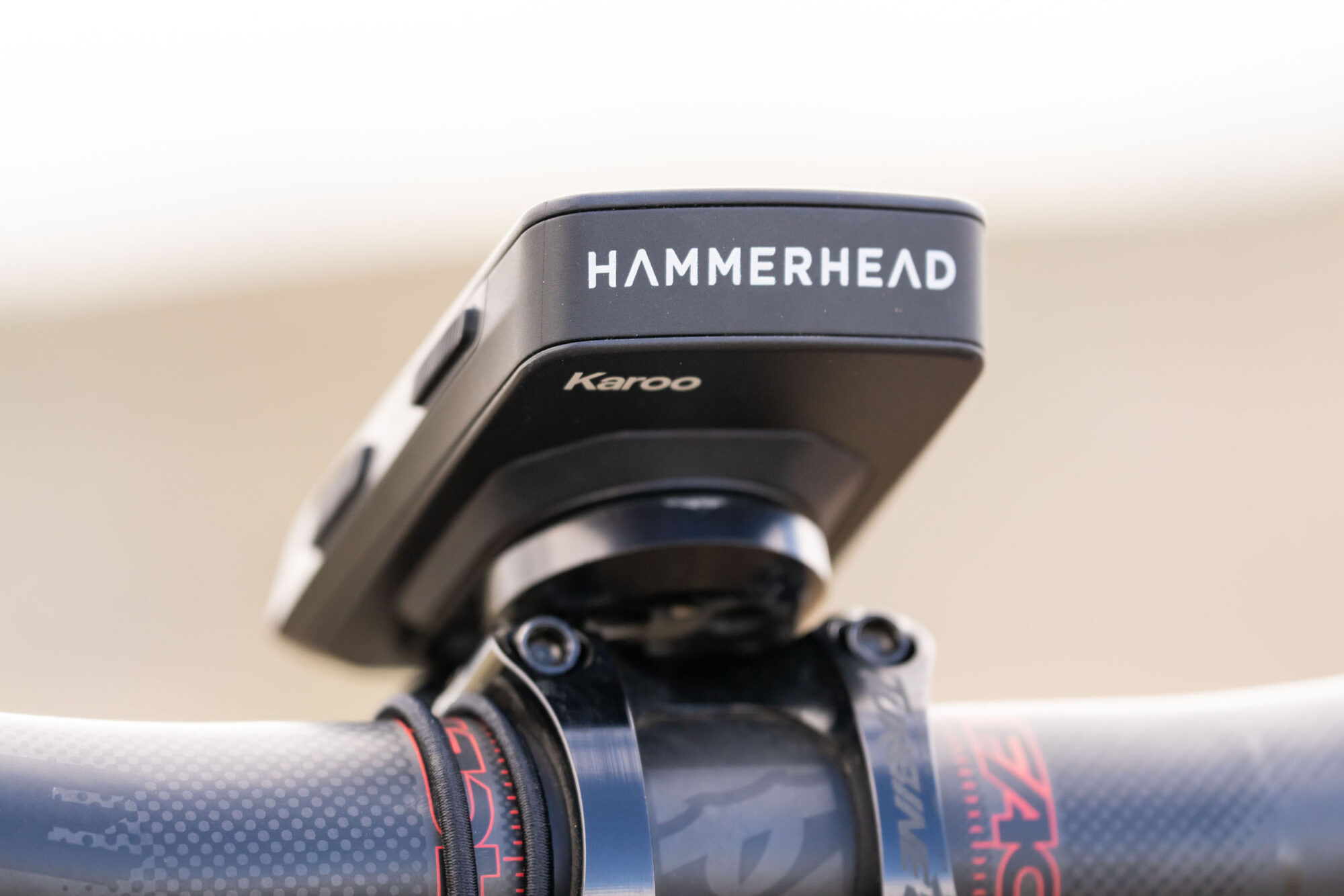
If you missed my previous review of the Karoo 2, I’ll help clarify the differences while sharing what’s new with Hammerhead’s latest head unit. Hammerhead introduced the Karoo 2 in 2022 as the successor to the original Karoo, launched in 2018. However, the latest Hammerhead Karoo reviewed here is the first head unit designed by the brand after SRAM acquired it in January 2022.
External Specs and Features
Similar to the Karoo 2, the third-gen model boasts a stunning touchscreen display with the same 3.2-inch (8.13-centimeter) diagonal size. The overall form factor remains very similar, but the new version features a tapered shape that’s wider at the bottom and narrower at the top. While the Karoo 2 had a matte finish glass, the new version boasts a brighter and clearer display and a finish that better defuses direct sunlight—a notable improvement I instantly noticed on my first ride. I also observed that the touchscreen isn’t as sensitive, which means you might need to repeat gestures to get it to respond, which can be slightly frustrating if you’re wearing gloves.
Similar to the Karoo 2, the Karoo has two buttons on each side, but they’re now more widely spaced, protrude further out, and offer overall better ergonomics. This new version also incorporates a dedicated power button on the bottom, which doubles as a sleep mode button to help conserve battery life on the go. Adjacent to the power button is the USB-C charge port, now equipped with a built-in port cover, a welcome upgrade over the previous version.

The devices still utilize Hammerhead’s mounting system, now with a slightly improved mount featuring adjustable fore and aft positions, enabling the device to be positioned closer to the handlebar or further out. Additionally, the mount now includes an accessory mount on the underside for attaching accessories such as a GoPro or light. While it retains the 31.8mm clamp diameter, it includes a quarter-turn adapter to accommodate all Garmin mounts, a thoughtful inclusion that eliminates the need for multiple standards across different bikes.
The device also comes with a tether, a feature I personally find invaluable. If you’re a Karoo 2 user wondering about the SIM card port, Hammerhead has eliminated it due to the functionality provided by the companion app, which I’ll discuss shortly.
Internal Specs
Despite featuring differing power-up screens, the internals of the unit appear identical. Upon booting up the device, it prompted me to sign into my account, and once I did, all of my data screens and sensors were neatly synchronized. However, I quickly realized I had used my Karoo 2 for training purposes a few years back, reminding me to delete several of these profiles. Just as I noted in my Karoo 2 review, Hammerhead has developed the most beautiful UX on any head unit I’ve tested, but this resulted in more power draw and slowed functionality. To address this, Hammerhead increased the RAM to 4 GB for the Karoo, noticeably reducing lag between actions.
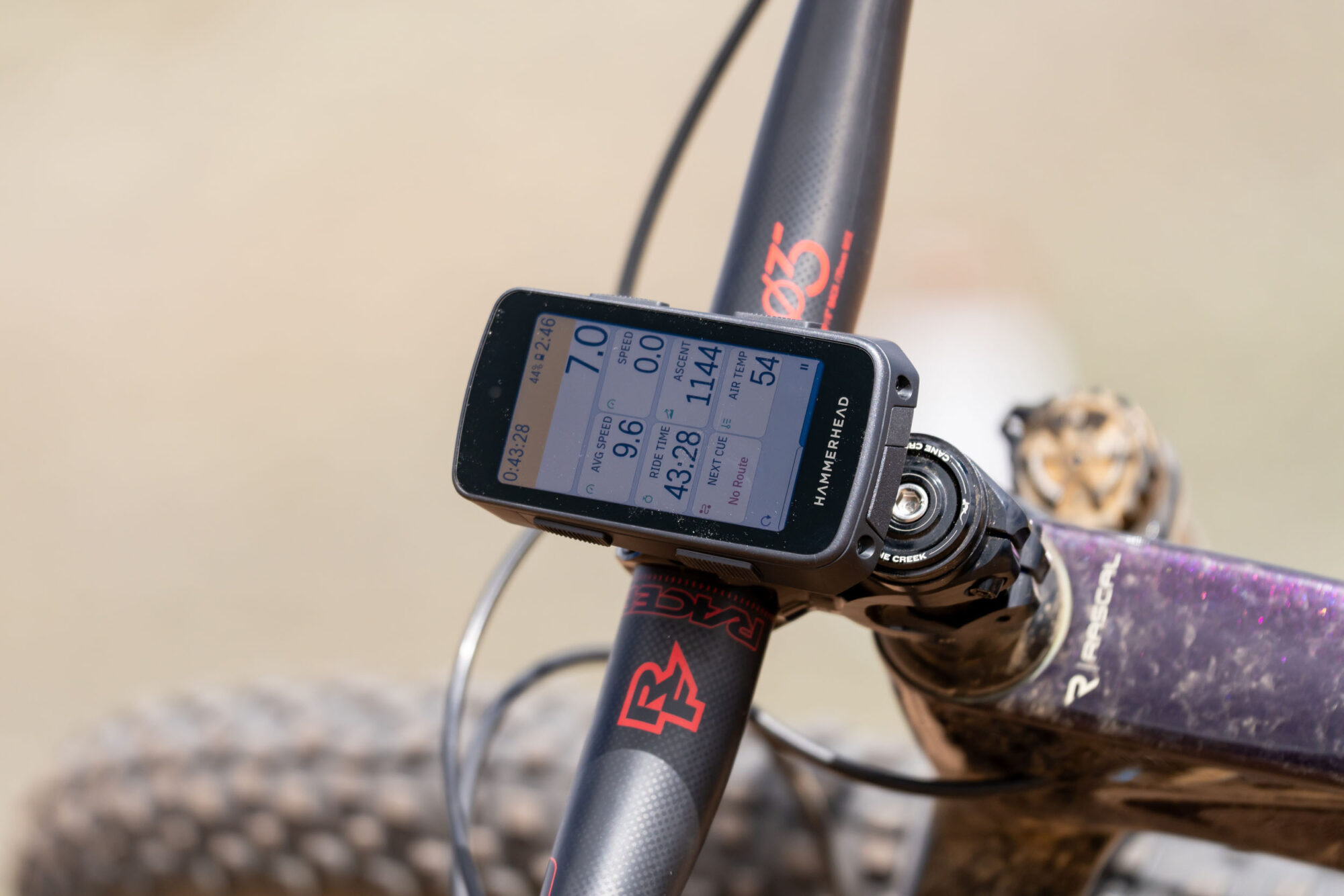
Additionally, the Karoo now boasts 64 GB of internal storage, double that of the Karoo 2, providing more storage for ride files and routes while also allowing you to download more of Karoo’s vibrant maps for offline use. This expanded storage also provides ample space for sideloaded third-party apps.
The new Hammerhead Karoo also features a new dual-band GNSS, although I wasn’t able to extensively test it in heavy tree cover. However, during my testing, it consistently maintained close proximity to my actual position while following a track and completing a loop around the neighborhood. While it’s similar to the old Karoo 2 in this aspect, I compared it to my Coros Apex 2 watch, which I’ve been testing over the last three months. Hammerhead claims that this chip allows for accuracy within 3 to 5 meters, and I’d say that’s true based on my experience.
Battery Life
Okay, here’s the big one. I stopped using the Karoo 2 because its battery didn’t last long enough for my style of riding. To address this, Hammerhead not only opted for a larger battery but also made attempts to utilize it more efficiently. They claim you can now achieve 15 hours of use in a high-power scenario, marking a claimed 30% increase. One way to accomplish this was by better controlling the screen brightness. You might notice a tiny sensor on the top of the unit; Hammerhead added an ambient light sensor, enabling the display to adjust automatically based on the lighting conditions, ultimately aiding in extending battery life.
Although I haven’t had the opportunity to test it for an extended period yet, I’ll report back on its performance over a longer term. However, during my initial ride with auto-brightness enabled under partly cloudy conditions, paired with my phone and with one sensor active but not following a route, I consumed 14% battery during two hours and 12 minutes of ride time. Following that, on a quick hour-long spin to test battery saver mode, it started at 76% and ended at 69%. Battery saver essentially shuts the screen off between functions like predictive climbing paths, route turns, and notifications. However, if you desire further battery preservation, you can deactivate these functions entirely. Consequently, I burned 7% of the battery during this test. Extrapolating this, 7% over, say, eight hours equals 56%, which is reasonable for all-day riding. However, uploading routes will undoubtedly eat up more battery.
Overall, the battery life has improved, though the question remains whether it’s sufficient. It’s hard not to ponder the potential of this unit with solar charging capability. I’ve found the Edge 1040 solar appealing as it has lasted five days of continuous all-day riding without charging. In contrast, the Karoo would require charging multiple times during that period. Yet with easily accessible screen-off functionality, the ambient sensor, and battery saver mode, I should be able to plan for all-day excursions without the battery completely draining, as often occurred with the Karoo 2.
Functionality and Interface
The on-screen functionality of both the Karoo 2 and the latest Karoo remains identical, which saved me a lot of time to get familiarized with how the device functions. Hammerhead has consistently developed and added firmware updates over the years and months for the Karoo interface, showcasing their proficiency in this area compared to other head unit manufacturers. They’ve also committed to maintaining consistent firmware updates for both the latest unit and the Karoo 2.
For newcomers to the interface, navigating the Karoo is far less daunting than with a Garmin device. It’s intuitive, simple, and visually appealing. Each profile can be customized and adjusted on the device to suit individual preferences, including your preferred riding type, number of data pages and fields, and specific categories within each field. Users have the flexibility to edit turn-by-turn settings, too. For example, my “bikepacking” profile is set up to follow a route, enabling the automatic display of the map when approaching a route turn, even if I’m on another page. Options like phone notifications, climber predictive path—which essentially tells you the gradient and milage of a climb with or without following a route—Strava live segments, and sensor activation for specific profiles are easily toggled, making the interface both intuitive and kind of fun to play with. Route following remains straightforward and user-friendly, mirroring the experience of the Karoo 2 with no notable changes.
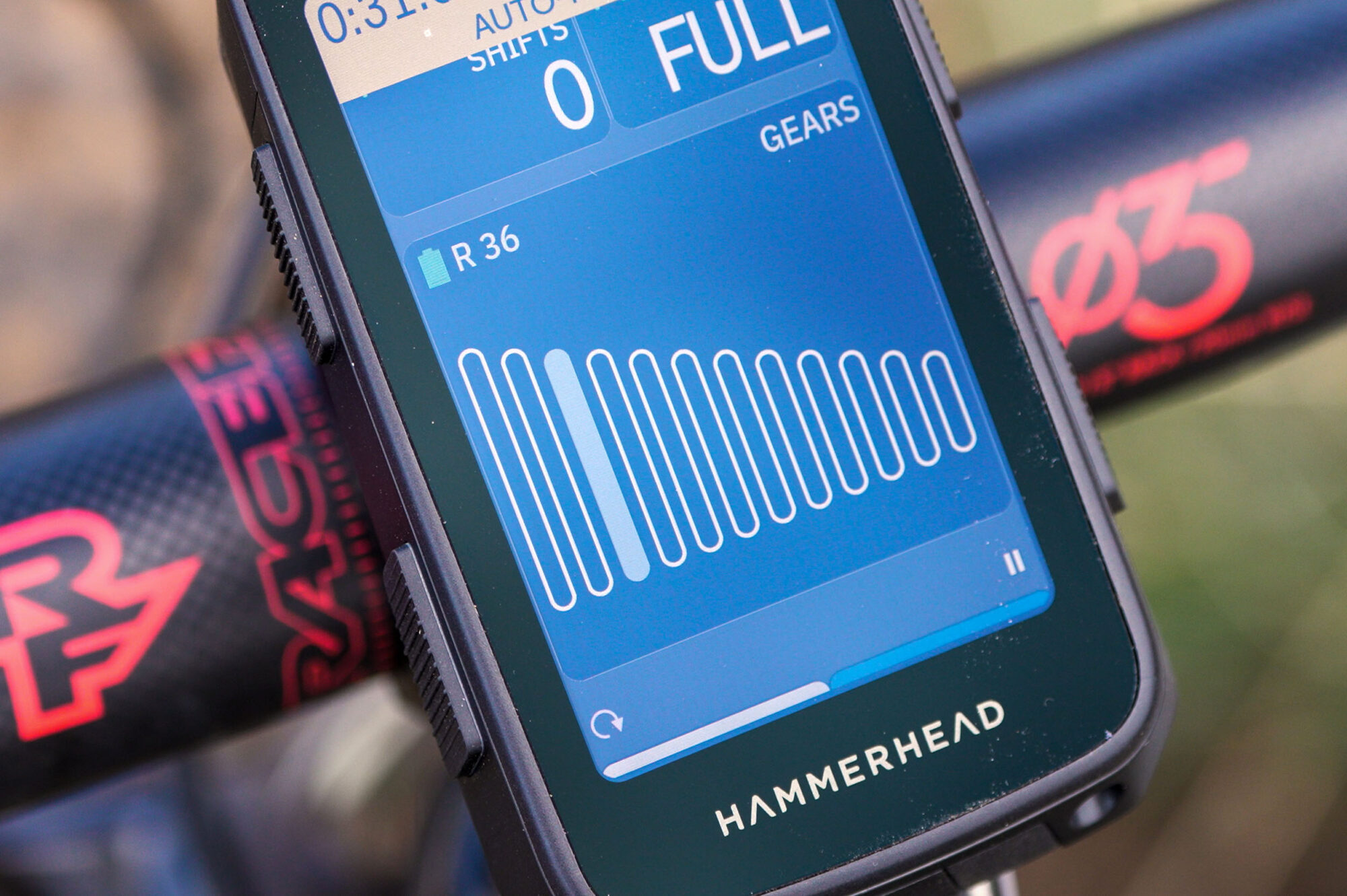
SRAM’s decision to acquire Hammerhead was significantly influenced by its successful product line. Rather than starting from scratch, SRAM had a robust head unit to work with. They further enhanced it by introducing a unified login process that seamlessly imports all AXS components and sensor configurations, allowing users to view battery status and configure controls directly from the unit. This process seamlessly transferred all of the bikes from my AXS app over to Karoo, which was quite impressive.
For those less inclined toward technology, kudos for getting this far into the review; navigating these advancements might be a challenge. But for tech enthusiasts, SRAM’s continued dedication to setting the standard with functional advancements is commendable.
Companion App
With the new Hammerhead Karoo, signing in allowed it to access all the routes I had manually uploaded on my Hammerhead web dashboard, primarily from Ride with GPS. You can also link other mapping programs you use, such as Strava and Komoot, through the web dashboard. Hammerhead now provides a companion app, albeit different from those offered by Wahoo or Garmin. It primarily serves as a means for the Hammerhead Karoo to connect to the internet and isn’t intended to replace the dashboard, meaning, you can’t create or edit routes or data fields on the companion app. Instead, it facilitates communication when the device isn’t connected to Wi-Fi, such as uploading a route after completing a ride.
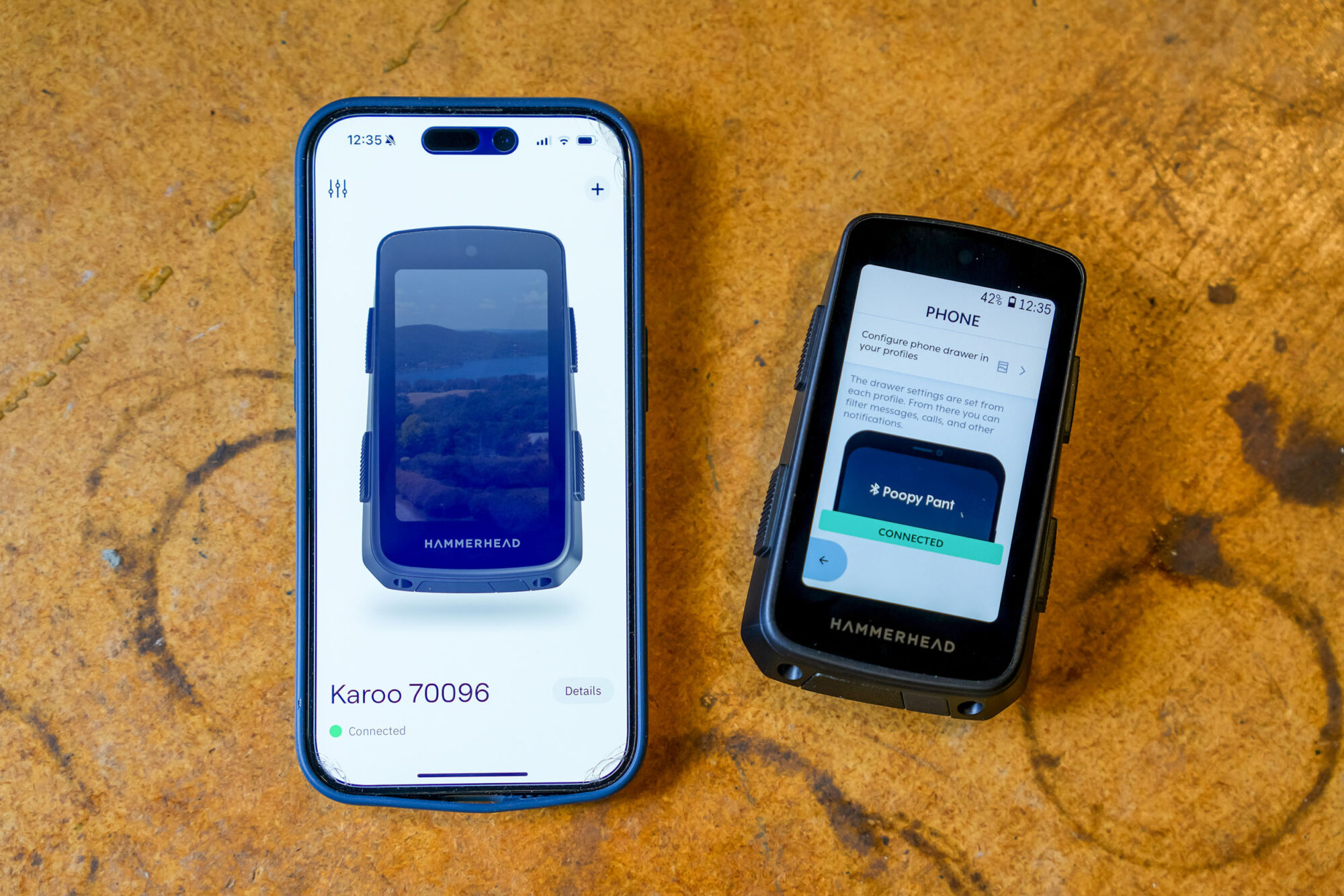
While the SIM card port previously handled this function, I never utilized it. For users with smartphones, downloading the Hammerhead app allows you to remain connected. It offers live tracking, enabling you to share your location with loved ones as long as your phone is within cell range. This feature isn’t particularly useful for me, as I often find myself out of cell service during my rides. Instead, I rely on inReach devices or the SOS functionality on my phone. However, a neat feature is the general share functionality on your phone. For instance, if a friend sends you a pin or location on Google Maps, you can push that location from your phone to the device. You can save the point of interest (POI) or have the device navigate to the location, which could be quite convenient.
Training
Like its predecessor, the Karoo 2, the Hammerhead Karoo boasts a comprehensive array of training features, encompassing new and enhanced data fields and the capability to pair with specific sensors like heart rate monitors and power sensors, and it allows you to upload training metrics such as FTP and heart rate zones. Additionally, it seamlessly pairs with Training Peaks and Trainer Road, making it a useful tool if you’re training for a significant event or seeking to strengthen performance.
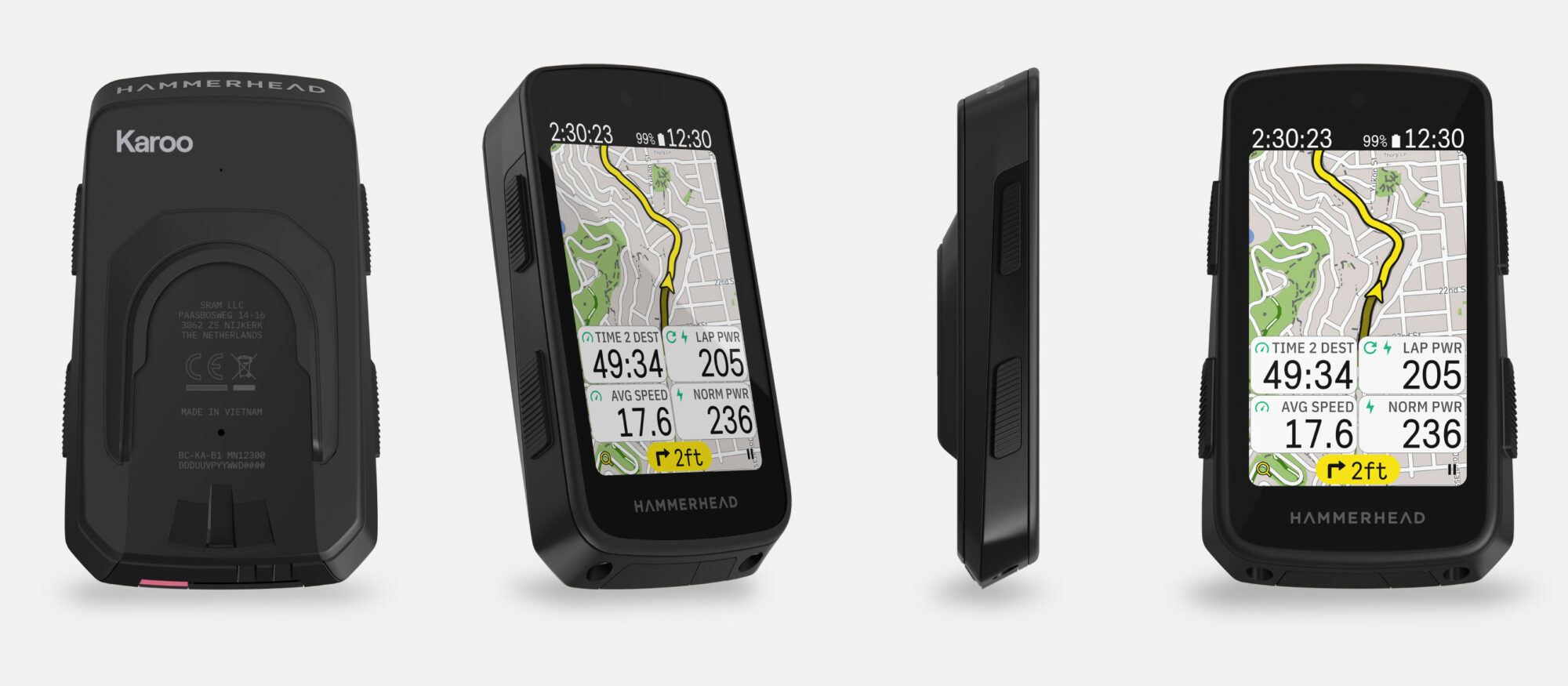
Compatibility
About two years ago, Shimano forced Hammerhead to remove all Di2-related functionality from the Karoo. This decision prompted me to disable automatic updates on my Karoo 2 to prevent the removal of this functionality. This worked until I eventually stopped using the Karoo 2 due to its inadequate battery life. Interestingly, Shimano didn’t revoke this integration from other head units after SRAM acquired Hammerhead, which I perceive as a somewhat aggressive tactic. However, there is a workaround with a third-party sideloaded app called Ki2, at least for the Karoo 2. Installing it involves a somewhat complex process, and I’m unsure if it works on the Karoo, but for those interested, DC Rainmaker likely has more insight on the matter. From what we’ve heard, Hammerhead has reached out to Shimano and is open to discussions at any time. They remain hopeful that there is a path to reintroduce this functionality for Karoo users in the future.
Hammerhead Karoo vs. Garmin, Wahoo, etc.
The new Hammerhead Karoo comes packed with updates and improvements over the Karoo 2, with few downsides aside from its higher price tag of $475 USD, which might come as a bit of a shock to some. Nevertheless, it’s a premium product, especially when compared to competitors like the Wahoo Element Roam, priced at $399 USD. While both units offer similar functionalities, the Karoo distinguishes itself with its more elegant and visually appealing user experience.
Having used all the companion apps available, the simplicity of the Hammerhead app stands out, eliminating the guesswork often associated with navigating the device. The Karoo’s touchscreen provides swift and intuitive functionality, complemented by robust support from the companion app, making device management relatively straightforward. However, some users might wish that the companion app allowed editing of all the device functionality. Additionally, the battery life remains somewhat uncertain, and I’ll need to do a lot more testing to provide detailed battery ranges for different riding styles.
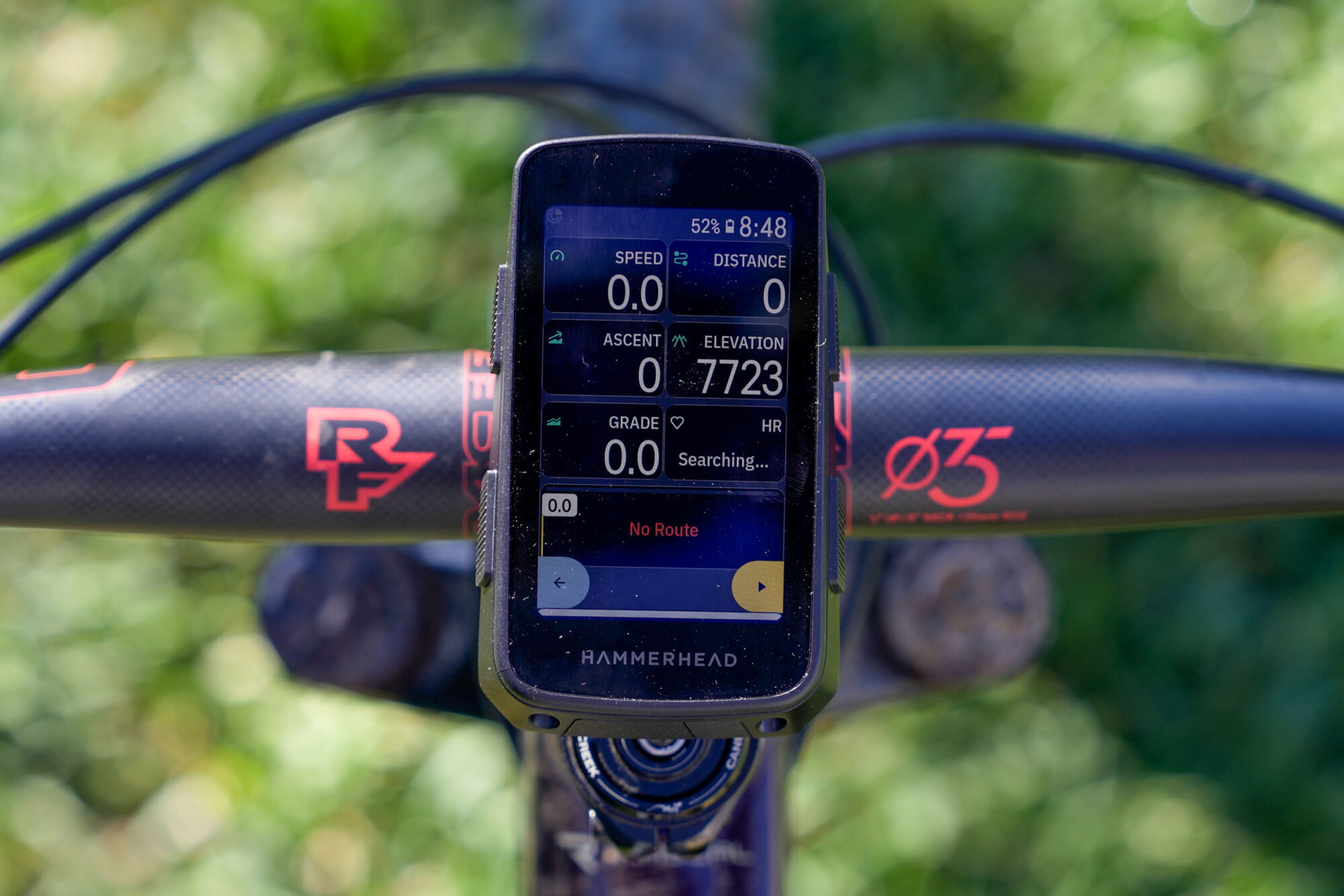
Ultimately, whether this unit is right for you depends on your preferences. If simplicity is key, the Wahoo ELEMNT Bolt is a strong contender. If long battery life is your priority and you don’t mind a complex user interface, the Garmin Edge 1040 might be more suitable. However, for those who prefer an Android-like user experience with a stunning display and comprehensive features, the Karoo undoubtedly stands out.
- Model/Size Tested: Hammerhead Karoo
- Actual Weight: 123 grams
- Place of Manufacture: Vietnam
- Price: $475
- Manufacturer’s Details: Hammerhead.io
Pros
- Intuitive and easy to use while still offering loads of features
- Battery life issues seem to be addressed
- The screen is much easier to view
- The companion app allows more connectivity without needing a SIM card
- Faster to process commands
Cons
- Touch screen is not as responsive as the old version
- $75 USD more than the old version
- It still doesn’t seem to have the ideal battery life for many bikepacking trips
What are your thoughts on the new unit? Let us know in the conversation below!
Further Reading
Make sure to dig into these related articles for more info...
Please keep the conversation civil, constructive, and inclusive, or your comment will be removed.







